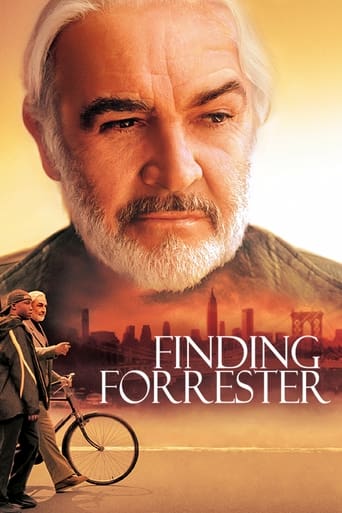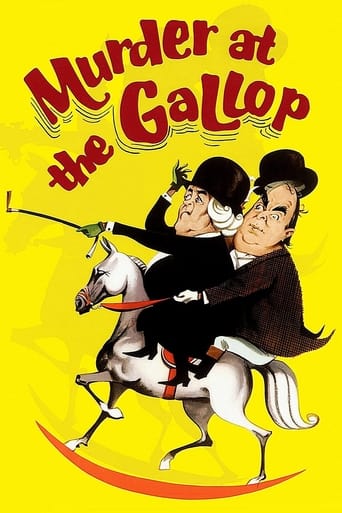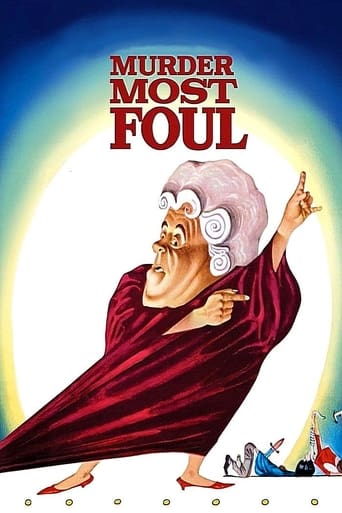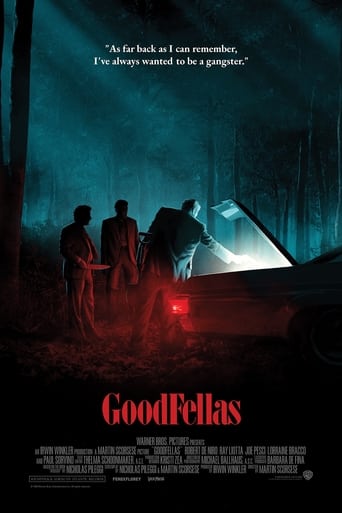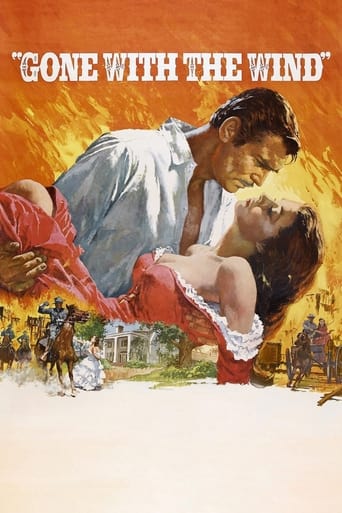
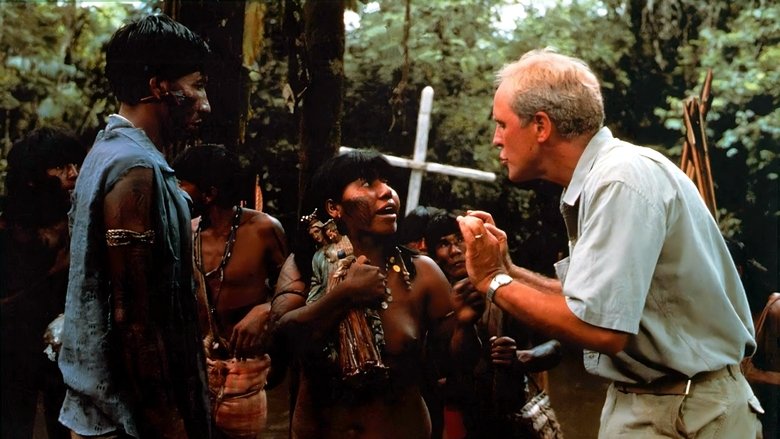
At Play in the Fields of the Lord (1991)
Martin and Hazel Quarrier are small-town fundamentalist missionaries sent to the jungles of South America to convert the Indians. Their remote mission was previously run by the Catholics, before the natives murdered them all. They are sent by the pompous Leslie Huben, who runs the missionary effort in the area but who seems more concerned about competing with his Catholic 'rivals' than in the Indians themselves. Hazel is terrified of the Indians while Martin is fascinated. Soon American pilot Lewis Moon joins the Indian tribe but is attracted by Leslie's young wife, Andy. Can the interaction of these characters and cultures, and the advancing bulldozers of civilization, avoid disaster?
Watch Trailer
Cast


Similar titles
Reviews
The plot isn't so bad, but the pace of storytelling is too slow which makes people bored. Certain moments are so obvious and unnecessary for the main plot. I would've fast-forwarded those moments if it was an online streaming. The ending looks like implying a sequel, not sure if this movie will get one
It’s sentimental, ridiculously long and only occasionally funny
A terrific literary drama and character piece that shows how the process of creating art can be seen differently by those doing it and those looking at it from the outside.
The movie's neither hopeful in contrived ways, nor hopeless in different contrived ways. Somehow it manages to be wonderful
God made missionaries so that they could be 'at play in the fields of the lord', harvesting souls so that they (the missionaries) get confirmed entry into heaven on judgment day. No kidding here – check with any religious authority. The only problem is that just how many souls need to be saved or harvested per missionary? That apart, another problem was that what to do with the savages once they had been saved by having accepted the Lord Jesus as the savior? Here there were two choices – either they could 'serve' the missionaries and their political masters for the rest of their lives, but in case they were not suitable for that purpose, or the land they were living on was required, then the best solution was to kill them, because the perfect logic was that once their souls had been saved, they had no need for their bodies any longer. The important point to note is that they must be saved first and then only must they be killed, otherwise who knows where their souls might escape to, never to be harvested? Again I am not kidding, check the History of the 'conquest of paradise'. The Amazon forests are the last of the 'fields to be harvested', because they are difficult to access. Although systematic cutting of the forests is now well under progress, the speed at which it has been done earlier without machines was quite slow. The basic storyline is that the government hires half Native American pilot Lewis Moon to bomb the wooden settlement of the nearby Niruna tribe so that they run away and the land can be used by the government, as also gold has been found there. There are two missionary couples who want to 'save' the tribal people before they are made to run away by the government. When Moon takes his plane over the settlement, a highly charged and unafraid tribal leader shoots a futile arrow towards him. Shaken by this experience, and with the help of the local drug something snaps inside him and he refuses to drop the bombs over the settlement, dumps his job and goes to live with the Niruna who accept him as some kind of person who has 'power'. Meanwhile the missionaries reach there and try to befriend the Indians by giving them gifts. Moon tries to warn the Indians that they should have nothing to do with the missionaries, and that any kind of contact is going to be fatal for them.But fated it is already, as disease first consumes the son (Billy) of the sincere missionary Martin. Billy has become close friends with the natives, and when he dies, they are also heartbroken and try to figure out who killed him, rather than accept the civilized man's 'fact' that malaria was the cause. Through their religious visions they conclude that Billy was killed by the other missionary Leslie, who flees.Subsequently, disease hits the Indians as they are infected by flu carried by Moon, and they have no immunity against it. The religious leader of the Indians begins to suspect that Moon is a fraud, and Moon feels he is trapped between two extreme world views which cannot be reconciled because there is no common ground between them. One world view is that of civilization grounded in material science as well as organized religion of monotheism, the other world view is of raw nature in harmony and hidden entities as causes or controls, and Moon is in the No Man's Land between the two. The settlement is bombed and destroyed, the Indians flee into the forest, and Moon is confronted by the native religious leader who calls Moon a 'white man' before he dies.Moon is left 'all alone in the world with nothing but folly' (Carlos), the movie ends with him determined to live his life in the forest, all alone if need be. In a very strange way Moon reminds me of a real life character caught in the No Man's Land between organized religion and primordial personal religious experience that makes that individual all alone in the world confronting the monumental follies of man. Kierkegaard roamed the streets of Copenhagen all alone 'at play in the fields of the lord' and his harvest was that of volumes of creative writing that probed the true meaning of religion.
I don't really have a problem if a reviewer, that is, a Siskle or Ebert type wants to give this a bad rating. That's what they are paid for - to find fault in movies.But everyone I know loved this film, well, maybe loved isn't the best word. It was at times painful, but it was very beautiful and very vivid and one of my favorite films.I was surprised when I looked for this on Netflix and it wasn't available. With all the junk on DVD, this is a beautifly filled, intense movie with a real story. I don't know why it doesn't have more recognition.
I purchased the video of this film after it passed through the theatres so fast I was unable to see it. I had read and reread Peter Matthiessen's award winning book and still gift it to friends and family. The film remained true to the novel. No film can truly portray in three or even in five hours all the complexities that a good writer can express. This film did however do an exceptional job for the time it had.Some have said this film is anti Protestant, or just anti missionary. That is just too simplistic and misleading a label for this story. There is far more to digest than those labels could ever suggest. Here is the deliberate forced movement or destruction of a tribe to gain gold mining opportunities. This is happening with local government officials looking the other way ignoring current federal obligations to the native population. There is a built in irony that Moon (Tom Berenger) is part Cheyenne Indian. The current South Dakota reservations came about by our government reneging on deals in order to get access to gold in the Black Hills. The result was an ecological and cultural disaster for the Sioux nation.This film was as about the symbiosis of culture and environment. Missionaries in Micronesia told the islanders in Yap that taboos on fishing were just superstition. An island bio-system that could once support 10,000 people can now not even support 1, 000. Missionaries tell South American tribes that their occasional drug inspired journeys are pure evil. There are ways these ancient cultural traditions can be kept without any threat to Christian doctrine. Instead, especially for western protestant missionaries, conversion is often more about cultural than religious conversion. This results in the ultimate economic and ecological destruction that follows.Everyone should see this film, and better yet read the incredible book that inspired it.
What a sad and beautiful film. It should be better known. This is a sensitive portrayal of the interaction among government, missionaries and indigenous peoples in Amazonia. I was impressed by its avoidance of ALL the clichés these groups bring to mind -- well, perhaps except for the government official. The characters, both Indian and Caucasion, are real human beings, deeply flawed but all trying to do the best they can. The storyline too does not unfold as expected (at least by me), and some of the surprises were not at all easy to accept. If you're really a glutton for punishment, try watching this one together with "The Mission." Amazing just how little difference a couple of hundred years can make...









